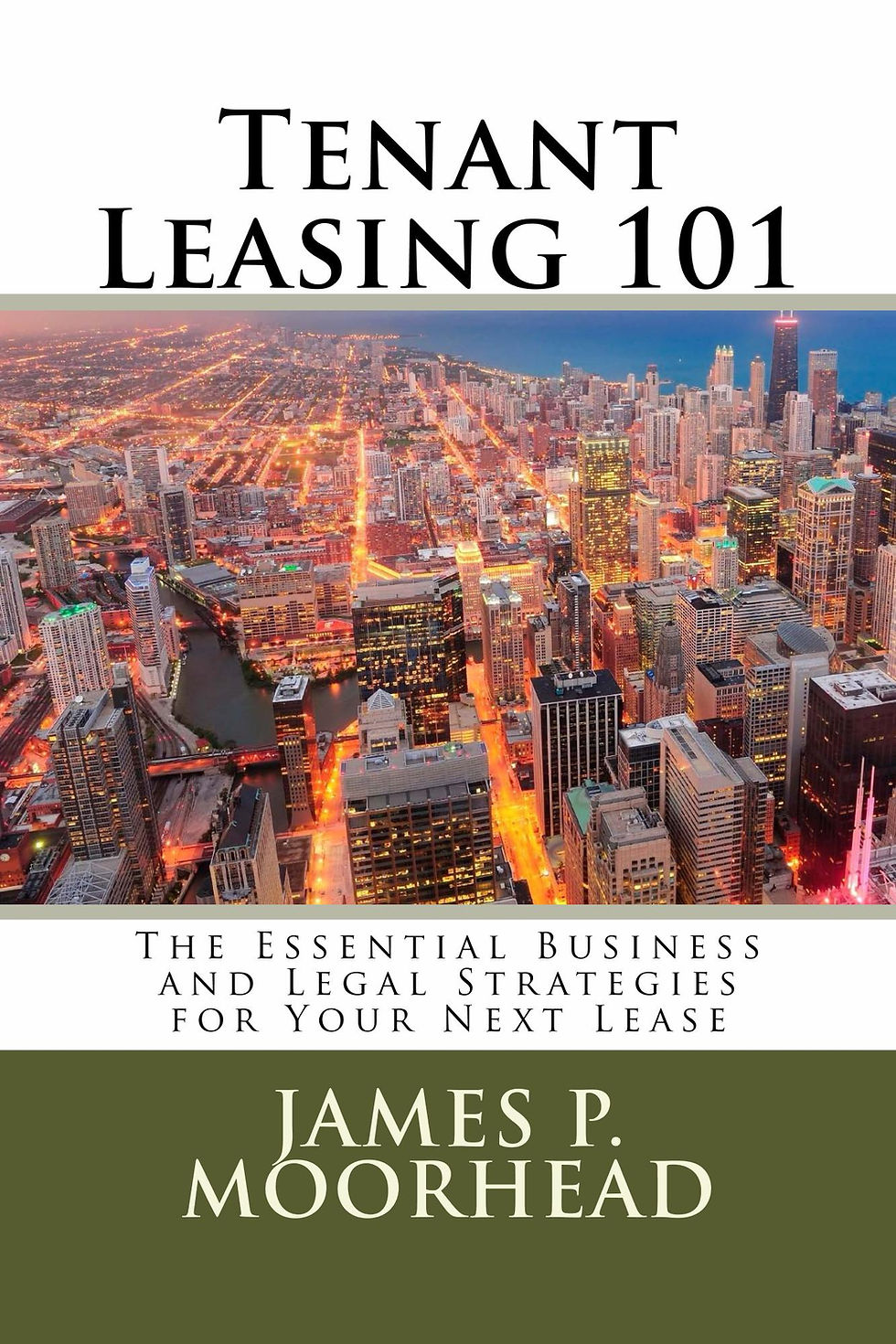Tenant Leasing 101: Utilities, Trash and Interruptions
- Jamie Moorhead
- Jun 4, 2015
- 2 min read

The following is an excerpt from Jamie Moorhead's new book, Tenant Leasing 101, now available in paperback and Kindle formats on Amazon here:
Utilities, trash, and utility interruptions are three relatively straightforward topics, but they are important to understand because of how extremely key they are to a smooth business operation.
Who Provides?
For the utilities, it is important for the tenant and the landlord to discuss how the utilities are provided. Each landlord and each building seem to have a different method, so the tenant cannot assume how it will be. There are a handful of questions to ask: are the leased premises separately metered? Will landlord arrange for the utilities, or does tenant have to do this? Will the utilities be stubbed to the wall of the leased premises, or does tenant have to connect at some other point? Who is responsible for utility maintenance, and at what point in the utility line does it become a landlord responsibility instead of the tenant’s?
If the utilities are not separately metered, then tenant likely will pay them on a proportionate share basis, similar to additional rent. However, tenant should confirm that other tenants, such as restaurants, are not using a disproportionately high amount of electricity or water. If tenant pays its proportionate share on a square footage basis, tenant then would be paying an unfairly high amount. If the utilities are metered, the meters should be installed at landlord’s cost.
Adequate Capacity
Landlord should covenant in the lease that it will provide the utilities to the leased premises in sufficient capacity for tenant to operate its business. If the type of utility supply is critical to tenant’s business, tenant can have the exact electric, lighting, or water specifications listed in the lease. Certain manufacturing, technology, or laboratory tenants may require such things.
Who pays for trash?
The tenant should always ask how trash is handled. How often is it picked up? Is the cost included in the additional rent, or is it a separate charge? How and where is it stored prior to being picked up? Knowing these items will help a tenant understand a key operational component of its business.
Interruptions
Interruptions in the utility service can have a devastating effect on the operation and profitability of the tenant's business. One way to handle this issue is to negotiate a rent abatement provision into the lease to provide tenant with an automatic rent abatement in the event the utilities are interrupted. For example, if the utility service is interrupted for 48 hours, then rent could automatically abate if landlord does not fix the problem within the 48 hours. Tenant also could have the right to terminate the lease if this issue is not cured within 30 days. These are very good provisions to have for the tenant because they usually motivate a landlord to remedy the problem....
For more, please visit Tenant Leasing 101 on Amazon here.























